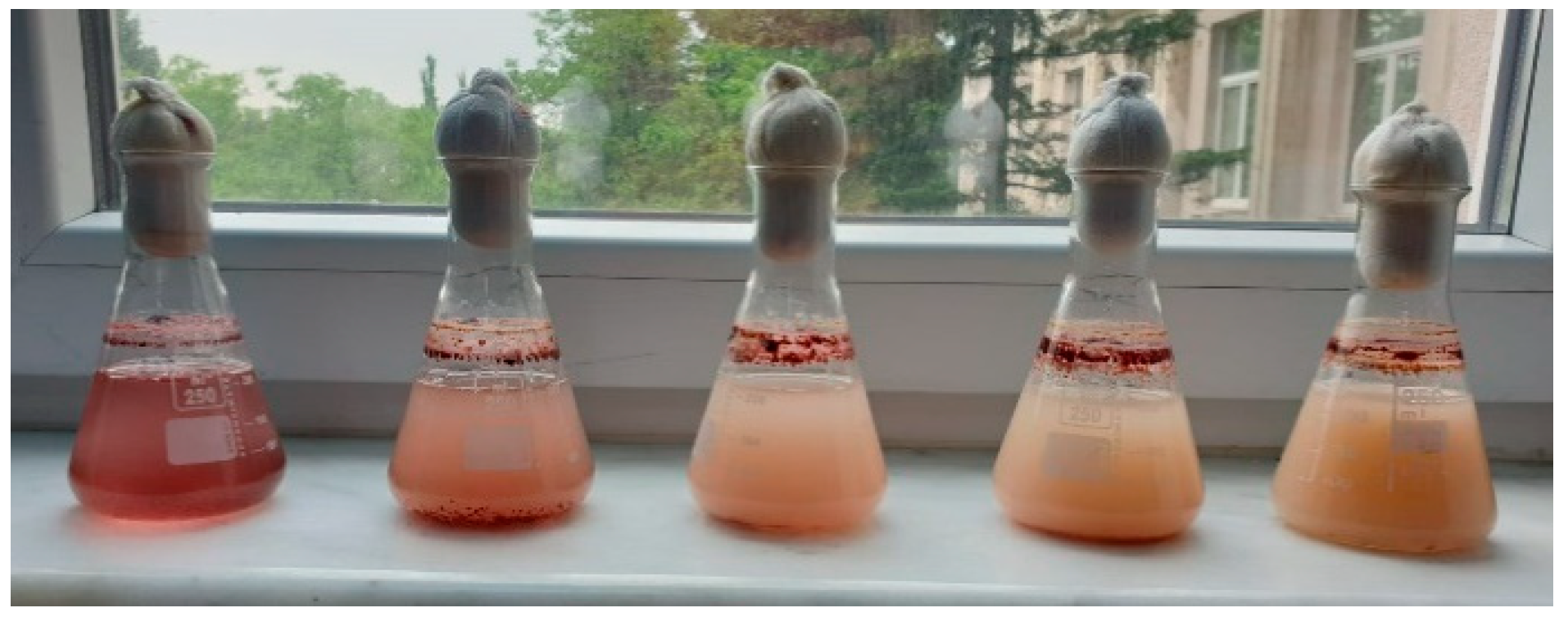Bioactive Compounds Obtained by Treating Dairy Wastewaters with Porphyridium purpureum †
Acknowledgments
References
- Lappa, I.K.; Papadaki, A.; Kachrimanidou, V.; Terpou, A.; Koulougliotis, D.; Eriotou, E.; Kopsahelis, N. Cheese whey processing: Integrated biorefinery concepts and emerging food applications. Foods 2019, 8, 347. [Google Scholar] [CrossRef] [PubMed]

Publisher’s Note: MDPI stays neutral with regard to jurisdictional claims in published maps and institutional affiliations. |
© 2020 by the authors. Licensee MDPI, Basel, Switzerland. This article is an open access article distributed under the terms and conditions of the Creative Commons Attribution (CC BY) license (https://creativecommons.org/licenses/by/4.0/).
Share and Cite
Vintilă, A.; Vlaicu, A.; Gălan, A.-M.; Paulenco, A.; Radu, E.; Velea, S. Bioactive Compounds Obtained by Treating Dairy Wastewaters with Porphyridium purpureum. Proceedings 2020, 57, 49. https://doi.org/10.3390/proceedings2020057049
Vintilă A, Vlaicu A, Gălan A-M, Paulenco A, Radu E, Velea S. Bioactive Compounds Obtained by Treating Dairy Wastewaters with Porphyridium purpureum. Proceedings. 2020; 57(1):49. https://doi.org/10.3390/proceedings2020057049
Chicago/Turabian StyleVintilă, Alin, Alexandru Vlaicu, Ana-Maria Gălan, Anca Paulenco, Elena Radu, and Sanda Velea. 2020. "Bioactive Compounds Obtained by Treating Dairy Wastewaters with Porphyridium purpureum" Proceedings 57, no. 1: 49. https://doi.org/10.3390/proceedings2020057049
APA StyleVintilă, A., Vlaicu, A., Gălan, A.-M., Paulenco, A., Radu, E., & Velea, S. (2020). Bioactive Compounds Obtained by Treating Dairy Wastewaters with Porphyridium purpureum. Proceedings, 57(1), 49. https://doi.org/10.3390/proceedings2020057049




